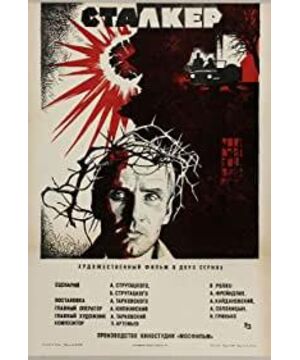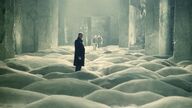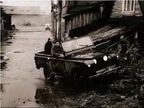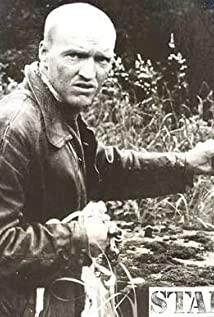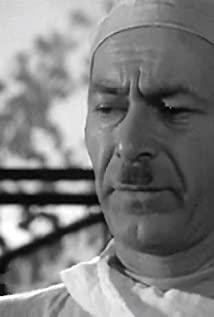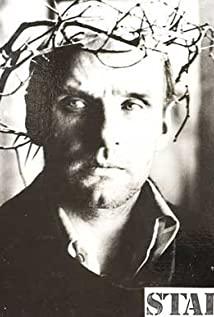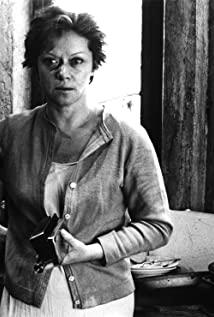2021 9.15 Beijing Russian Film Festival cgv Star Studios
When I was playing "Stalker" in the theater for the second time, I was confused for a long time: Why can't I be immersed in it this time? Is it because you know the plot direction and there are too many familiar scenes? After two years, my rationality has covered the sensitive and fragile sensibility during the depression recovery period.
My viewing process brought too much thinking, maybe this is inevitable in the second brush, lack of attention and expectations for the plot direction, naturally more attention will be placed on the present. At the beginning, it was a life in a faint yellow tone. The minimalist scene elements and fog, combined with the pale yellow tone, gave people a sense of fictional space or wasteland, like life in the world of novels. Even if there are many dirty details, from the overall minimalist style, it is also neat and dirty, like slippery tavern floors, paper-covered streets, stained glass and so on. The front part of the film used many similar lens designs, all started with a fixed lens, and then began to move, so that there is always new information in a long lens. The scene is constantly changing due to the movement of the lens and the movement of the characters from the background to the foreground. Now that I look at the long shot of the old tower, I don't even realize that it is a long shot. In my experience, "Stalker" has only one real long shot, that is, the shot of the railcar driving to the "zone". Most of the shots in the old tower are always "moving" and invisible. The most typical one is the very slow push of the lens to keep the scene smaller. Correspondingly, in Beratar’s long shots, the scene changes he made are dominant. Beratar is best at moving long shots, and the dynamics inside are very clear. It’s hard not to notice this. Rich changes in the picture.
I still think about why it is yellow, not black and white. Is it more three-dimensional? These are all flashy thoughts. When the railcar comes to the "zone", there is a very interesting detail. In 99% of the movies, the changes in the space will make the camera focus on the "scene", but the old tower makes us pay attention. People, and only people can be seen in the picture. The close shots and the sparse bald heads match the atmosphere very well. After watching the entire movie, you will understand that this whole is a sensual movie about sensitivity and despair. Fewer and fewer people believe in "zones" and fewer and fewer people need "zones", and "zones" may not be one. The existence of an entity is a spiritual existence. It becomes reasonable and ambiguous for us to follow people to the "zone" instead of following the scene to the "zone".
"Zone" is in sharp contrast with the old world, with rich colors and complex elements. All the miracles and awe about the "Zone" come from the old stories of sounds and stalkers. There are beasts and mysterious warning sounds, which we have not seen. Any surreal picture to prove the power of the "zone", their cautious adventure only stems from their belief, it is like a game of returning to childlike innocence. In the description of the stalker, the "zone" is both powerful and fragile. It can become a meat grinder for reckless adventurers, and also has a fear of alcohol, guns, and technology. It is like a wounded and exceptionally pure spiritual world. Stalkers have always called it the land of hope.
A writer and a science professor. In a sense, a writer represents sensibility, and a professor represents rationality. The film is full of Lao Ta’s cold disappointment in technology. Science has stifled people’s belief and imagination, and people no longer believe it. The "zone" is open to the desperate and equally sensitive soul. The writer is relying on the despair in his heart to come to the "room" all the way to the green light, but at the end of the film, the writer and professor both choose to abandon the "room", only The stalker is crying lonely, who else needs the "zone", who else needs art, and people return to the dark yellow life, without a beginning and no end. Compared with the "zone" enclosed by armed forces, the space of that yellow wasteland is more closed, and the flow of time cannot be seen.
The surreal scene of the girl at the end of the film is the climax of the film. This is the only surreal scene visible in the whole film. It comes from the girl’s belief that she has not disappeared. You can understand it as the power of the "zone", because the "zone" is a spiritual existence. As a child, the girl has not given up her belief in the "zone". Although she is lame physically, her spirit is the colorful world of the "zone", a world that has not been interfered by war and technology.
Lao Ta’s film attaches great importance to the design of the lens scene and the narrative structure, the overall sense of paragraph is very strong, and the composition of a single scene is very elegant. It is difficult for me to imagine how to photograph mystery in an ordinary wasteland. He has achieved daily defamiliarization through various designs.
The "zone" inhabits a piece of war debris, a place that has been injured by the force of science and technology. The "room" used to be a medical place for the physical body, but now it is healing the spirit. I can recall the shock when I watched it for the first time. At that time, I just came out of depression and often felt irritable, but "Stalker" made me not want to fast forward for a second. At that time, I was fragile and sensitive. I didn't pay much attention to the dialogue between the three people, but was infected by this mysterious and emotional atmosphere. At that time, I had a deep sense of substitution, as if I was also a member of the "zone".
My short comment at the time was this: the dark yellow tones are the adult world that makes people feel desperate. I thought that coming to the blue world seemed to have stepped into reality. Unexpectedly, we were in the regulated yellow zone. Only the child’s world is blue, and he has not lost his faith. Technology is harder than nature, and we often lose ourselves in modern civilization.
Although the second brush is more rational to watch this time, but I didn't expect that the things I felt were exactly the same. After watching "Stalker" and leaving the theater, I walked through the safe passage reserved for the night scene, as if shuttled through the underground pipe leading to the "room", and exhaled a puff of smoke in the streets of Beijing at night, like the cloud that could not be dissipated. In the dense fog, the sound of railroad tracks in the last subway, which was considered to be neglected in daily life, became clear at this moment, echoing and echoing the sound of railroad tracks running through the subconscious mind in the movie.
Reality, matter, and technology are all cold and ruthless here. The film deliberately blurs reality and illusion. Do you remember that the water glass shaken by the train at the beginning of the film happened in sleep, and the sound of the train did not disappear until the end of the film, maybe the whole " Zone", the whole movie is a dream that won't wake up. The aftereffects of watching "Stalker" made me doubt my perception of the world. At this time, two fashionable girls passed by me, but she did not exist.
View more about Stalker reviews


